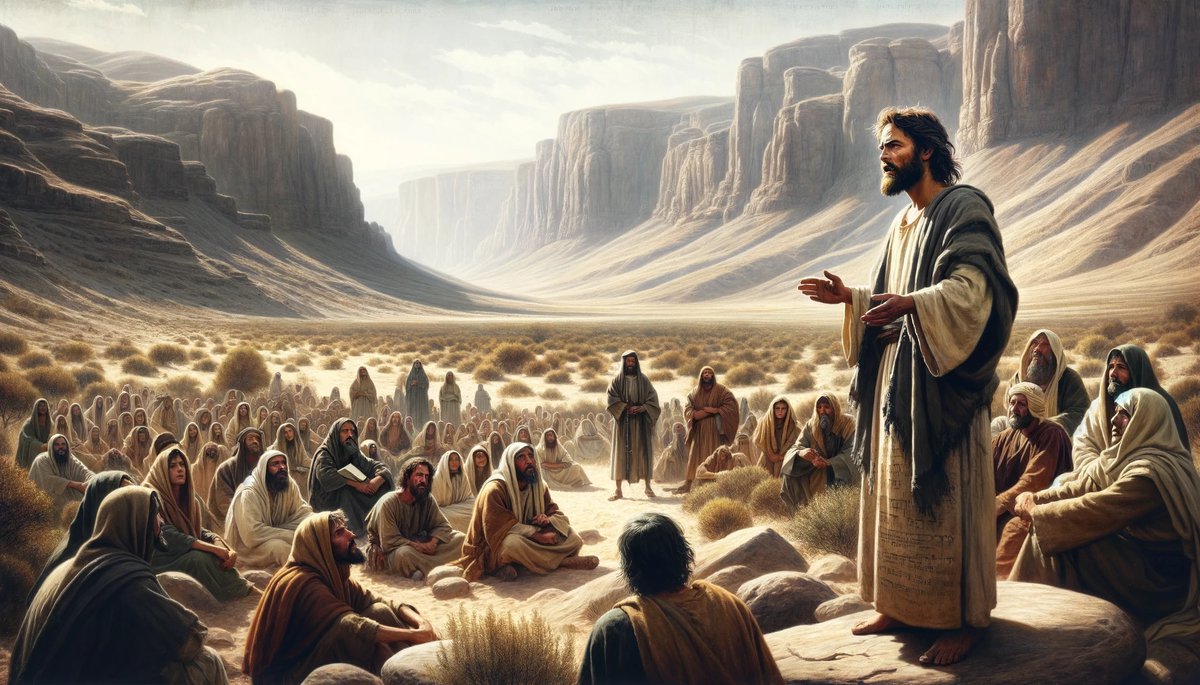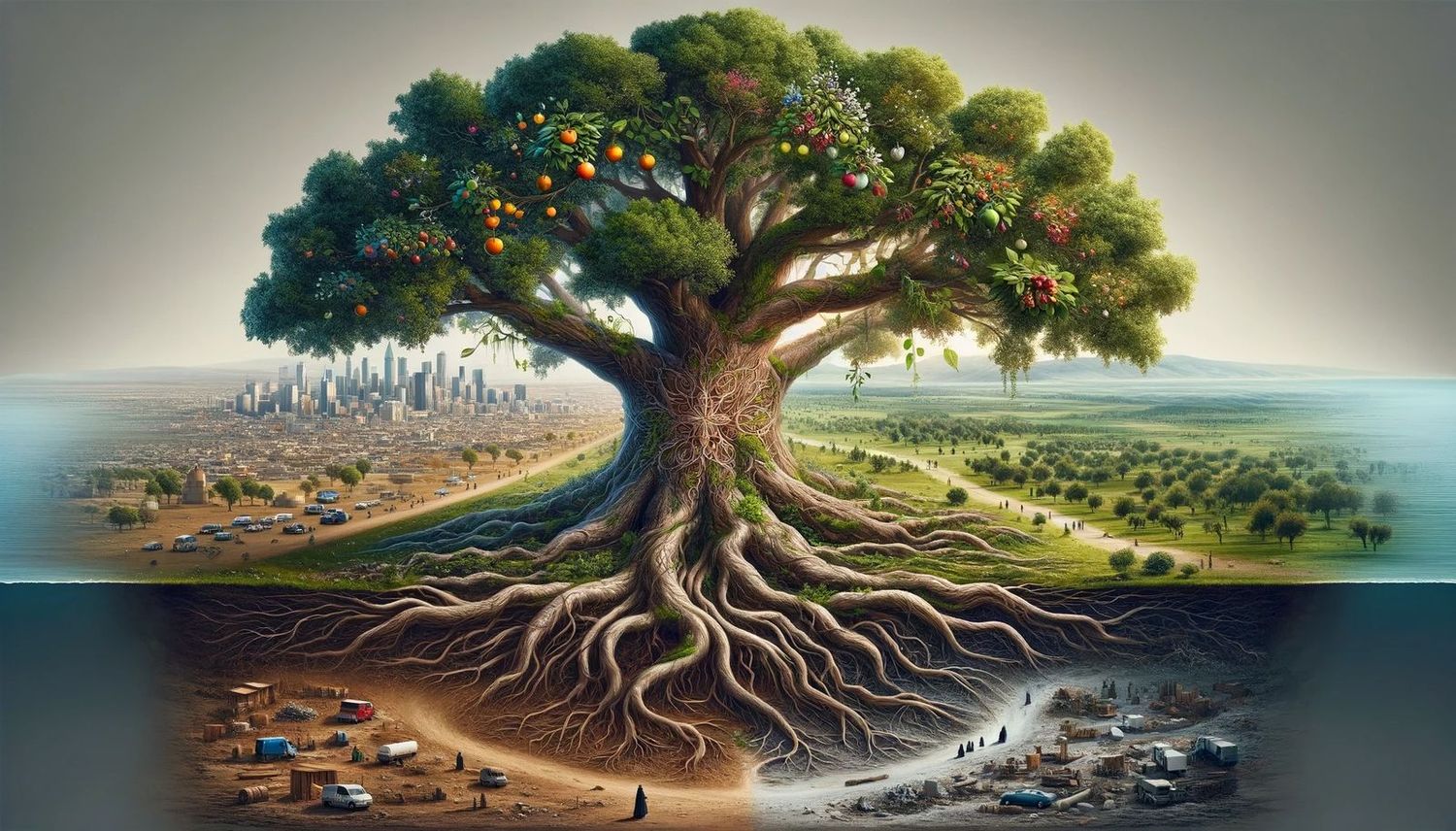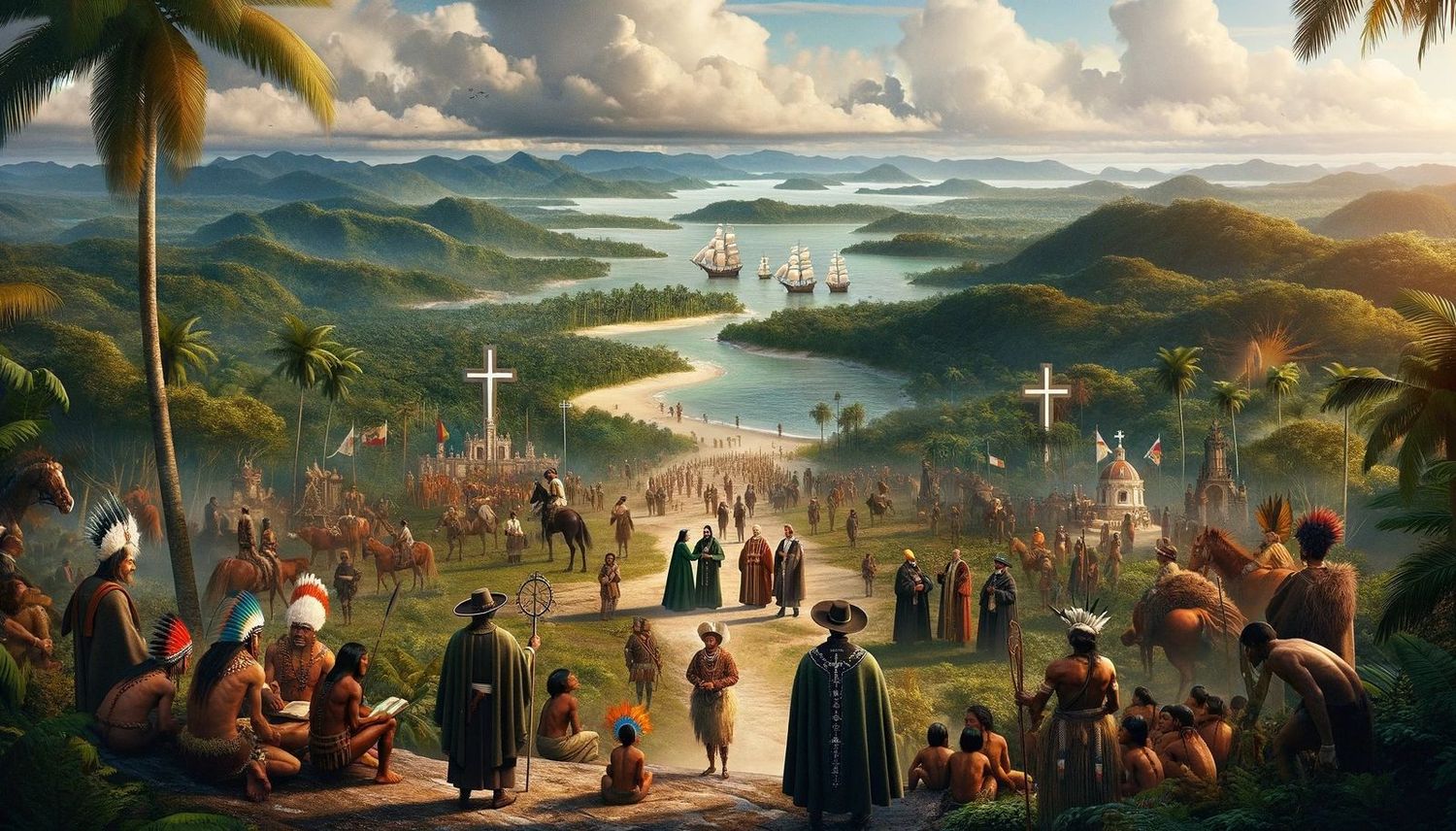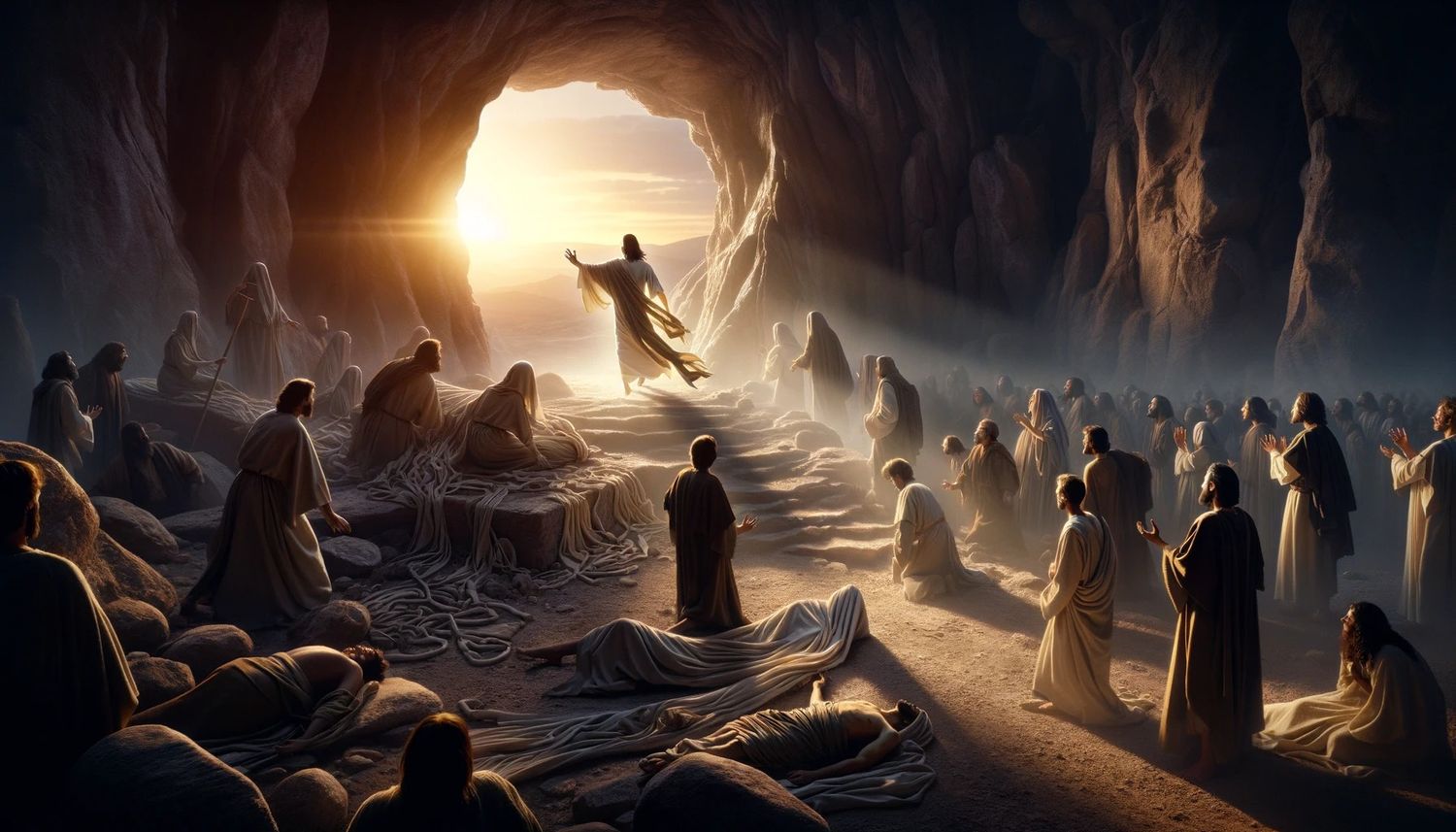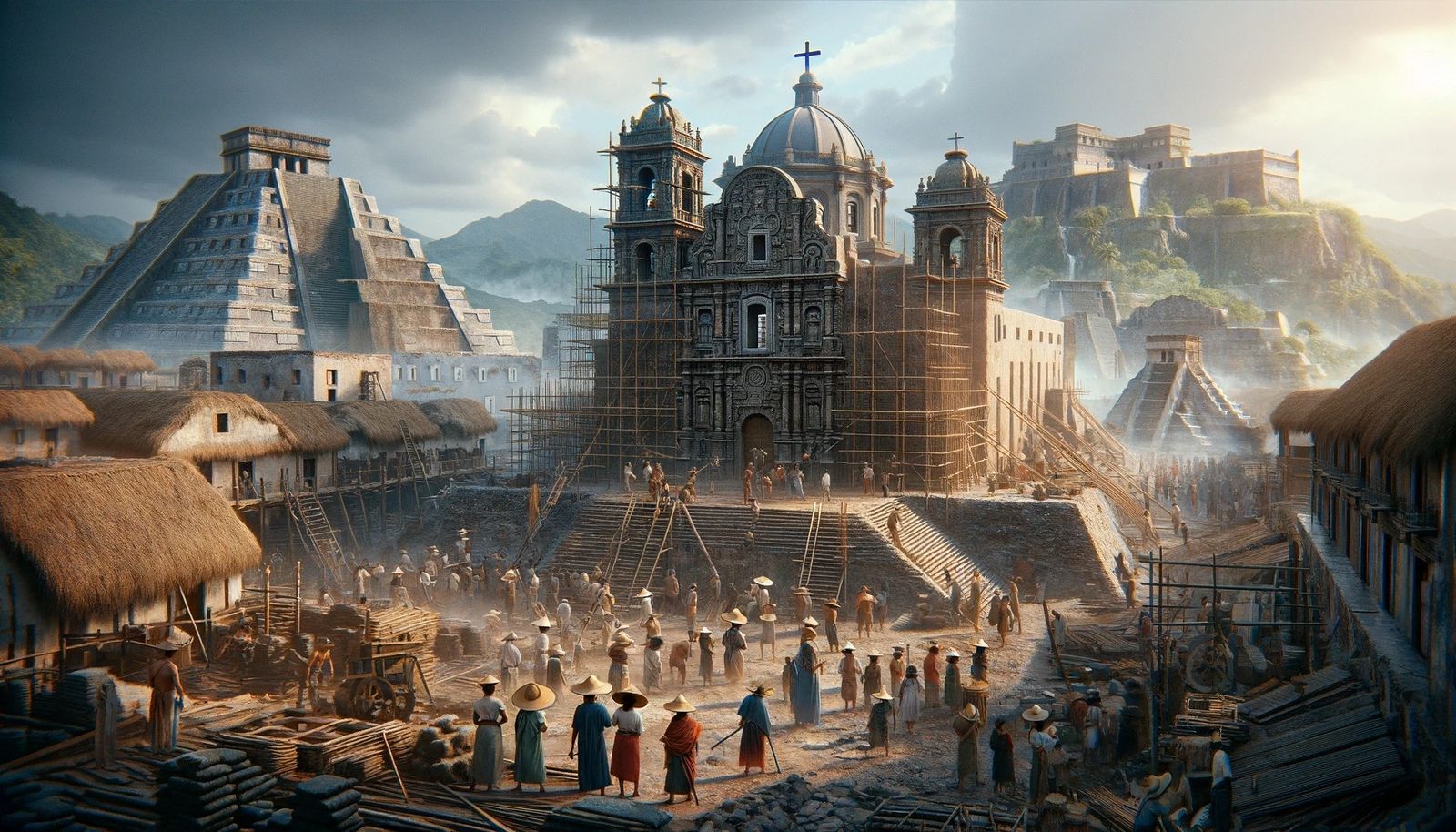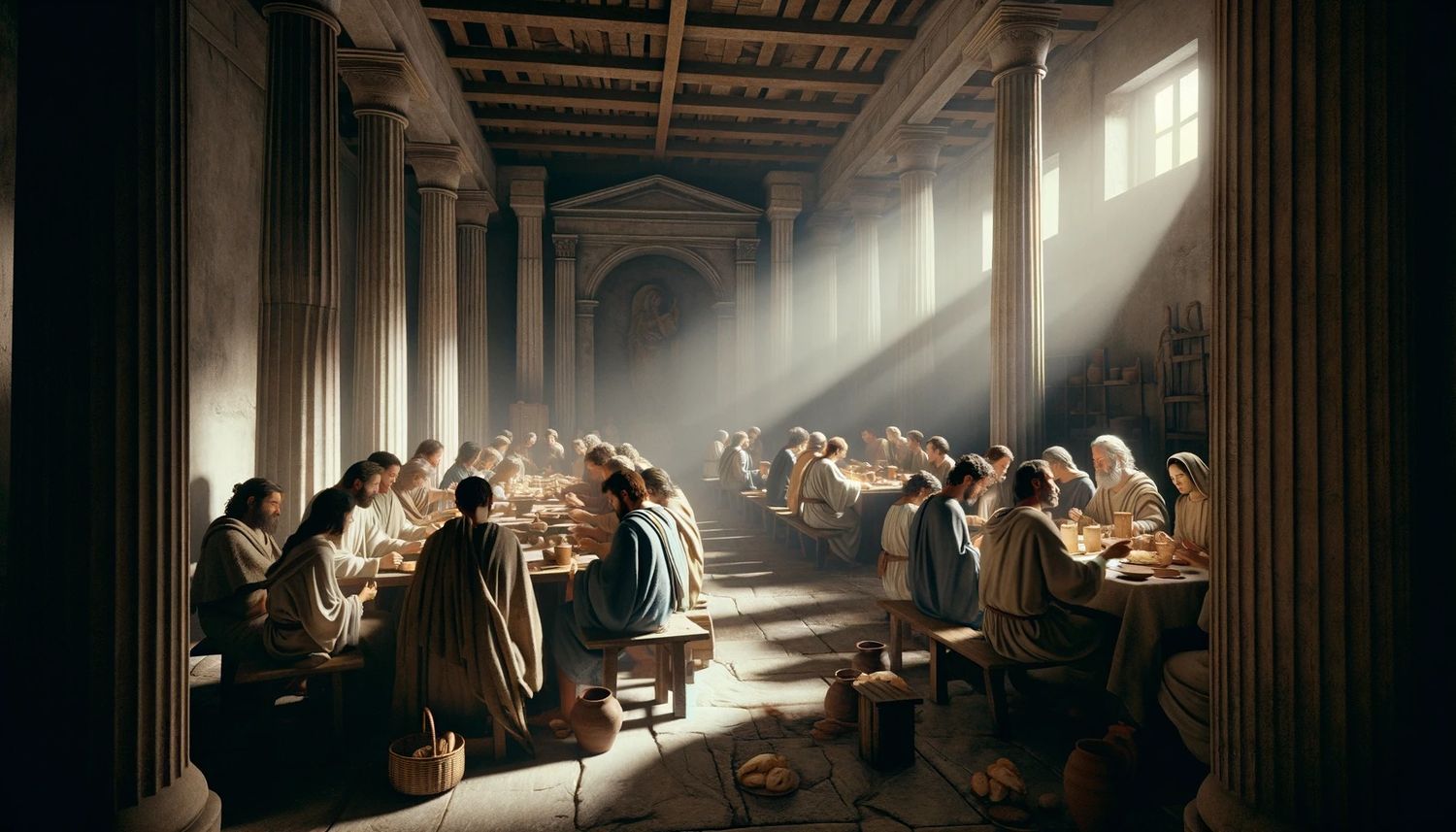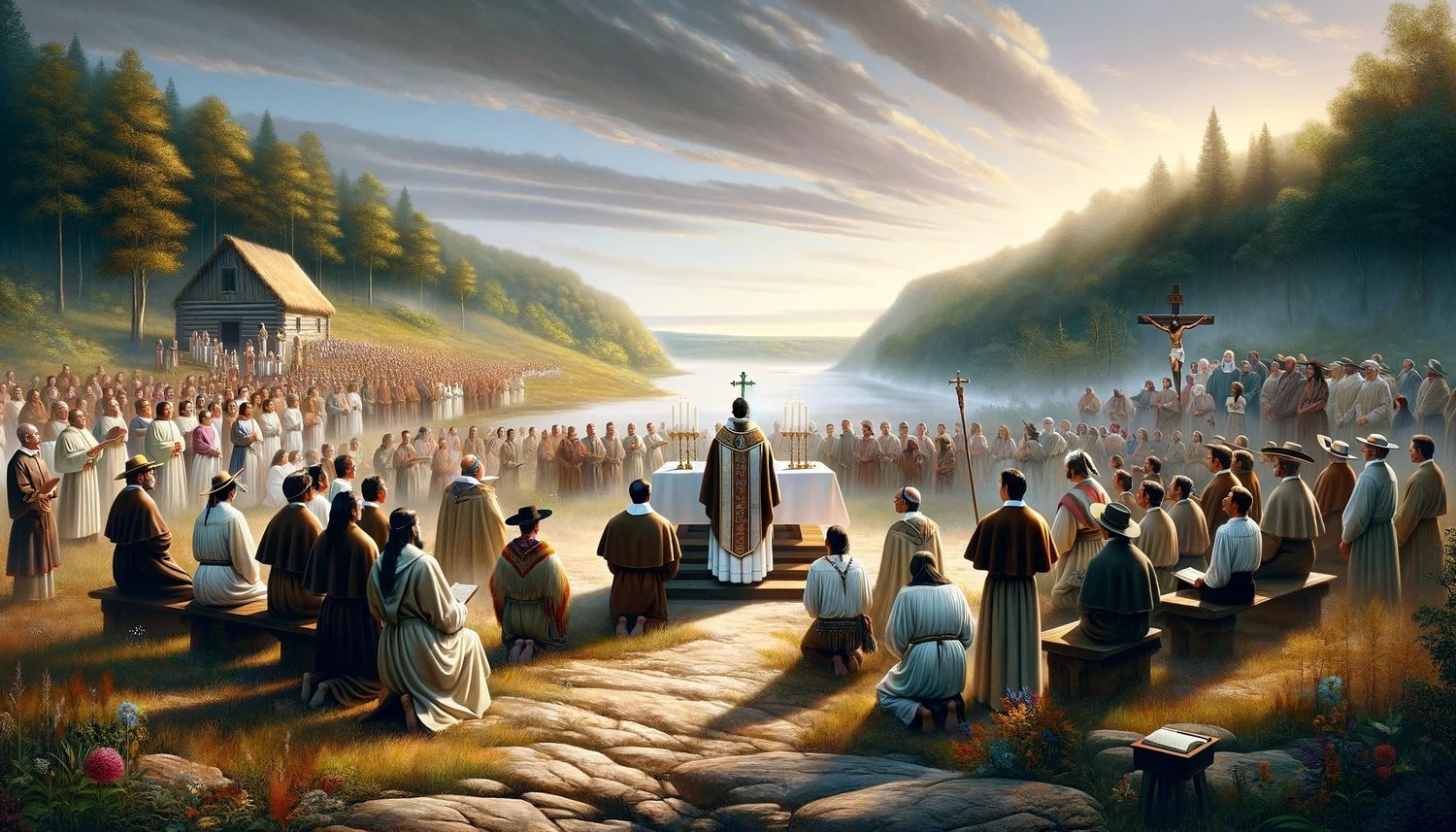Home>Theology and Spirituality>What Impact Did The Introduction Of Catholicism Have On The Lives Of Indigenous People?


Theology and Spirituality
What Impact Did The Introduction Of Catholicism Have On The Lives Of Indigenous People?
Published: February 18, 2024
Ericka Andersen, an editor at Christian.net, expertly merges digital strategy with content creation, focusing on faith and societal issues. Her communication skills enhance the platform's engaging narratives, fostering meaningful dialogue on belief's impact on society.
Explore the profound impact of Catholicism on indigenous communities and their spirituality. Uncover the theological transformations and cultural shifts brought about by the introduction of Catholicism.
(Many of the links in this article redirect to a specific reviewed product. Your purchase of these products through affiliate links helps to generate commission for Christian.net, at no extra cost. Learn more)
Table of Contents
Introduction
The intersection of spirituality, culture, and history has long been a subject of profound significance. When examining the impact of Catholicism on the lives of indigenous people, it is essential to delve into the complex dynamics that unfolded during the historical encounter between European colonizers and the native inhabitants of various regions across the globe. This exploration not only sheds light on the transformative effects of religious assimilation but also unveils the resilience and adaptability of indigenous communities in the face of profound change.
The arrival of Catholicism in the territories inhabited by indigenous peoples marked a pivotal juncture in the narrative of human civilization. It brought forth a collision of belief systems, societal structures, and ways of life, giving rise to a multifaceted exchange that reverberated across generations. As we embark on this journey of understanding, it is crucial to approach this topic with sensitivity and a commitment to unraveling the intricate layers of history and spirituality that have shaped the destinies of diverse cultures.
The introduction of Catholicism to indigenous communities was not merely a religious event; it was a catalyst for a profound reconfiguration of social, economic, and cultural landscapes. By examining this historical phenomenon through a multidimensional lens, we can gain insight into the complexities of human interaction, the enduring legacies of colonialism, and the enduring spirit of indigenous resilience.
Read more: How Roman Catholicism Impacts Culture
Historical Context of Indigenous People
The historical context of indigenous people is a tapestry woven with the threads of diverse cultures, traditions, and civilizations that flourished across the globe long before the arrival of European explorers. These communities, ranging from the Aztecs and Mayans in the Americas to the Maori in New Zealand and the Aboriginal peoples of Australia, developed rich and intricate societies deeply rooted in their connection to the land, spiritual beliefs, and communal structures.
Prior to the arrival of external influences, indigenous societies thrived through sustainable practices, intricate social hierarchies, and spiritual systems that were intricately intertwined with the natural world. Their deep reverence for the environment, ancestral wisdom, and communal bonds formed the bedrock of their existence, shaping their customs, governance, and daily lives.
The indigenous peoples' historical narrative is also marked by encounters with external forces, including trade networks, conflicts, and alliances with neighboring tribes. These interactions contributed to the dynamic evolution of their cultures and the exchange of knowledge, technologies, and belief systems.
The arrival of European explorers and colonizers irrevocably altered the trajectory of indigenous societies. The subsequent waves of colonization brought forth a seismic shift, disrupting age-old traditions and imposing foreign systems of governance, trade, and religion. This collision of worlds set the stage for a profound and often tumultuous reconfiguration of indigenous life, as they grappled with the far-reaching implications of colonial expansion.
Understanding the historical context of indigenous people is paramount in comprehending the profound impact of Catholicism on their lives. It provides a crucial backdrop for examining the complexities of cultural exchange, power dynamics, and the enduring legacies of colonialism that continue to reverberate through the annals of history. This historical context serves as a poignant reminder of the resilience, diversity, and enduring spirit of indigenous communities, whose stories are woven into the fabric of human civilization.
Arrival of Catholicism
The arrival of Catholicism in the territories inhabited by indigenous peoples marked a pivotal juncture in the narrative of human civilization. It brought forth a collision of belief systems, societal structures, and ways of life, giving rise to a multifaceted exchange that reverberated across generations. The introduction of Catholicism to indigenous communities was not merely a religious event; it was a catalyst for a profound reconfiguration of social, economic, and cultural landscapes.
The advent of Catholicism was intricately intertwined with the Age of Exploration, as European powers embarked on voyages of discovery and conquest, seeking new trade routes and territories. This era witnessed the arrival of missionaries, priests, and colonizers in the lands inhabited by indigenous peoples, heralding a momentous encounter that would shape the course of history.
The missionaries, driven by religious zeal and a fervent desire to spread the teachings of Catholicism, sought to convert indigenous populations to the faith. They viewed the indigenous belief systems as pagan and sought to supplant them with the tenets of Christianity. This missionary endeavor was often intertwined with the expansion of colonial empires, as the Catholic Church became intricately linked with the apparatus of colonization and governance.
The arrival of Catholicism introduced indigenous communities to a new spiritual paradigm, one that was markedly different from their existing belief systems. The Catholic faith, with its rituals, sacraments, and hierarchical structure, presented a stark contrast to the indigenous spiritual practices that were deeply rooted in animism, reverence for nature, and ancestral worship. This collision of worldviews engendered a profound and often tumultuous process of cultural exchange and adaptation.
The missionaries' efforts to propagate Catholicism were often met with a complex array of responses from indigenous communities. Some individuals and groups embraced the new faith, finding solace in its teachings and the promise of salvation. Others, however, resisted the incursion of Catholicism, seeking to preserve their ancestral traditions and spiritual autonomy. This dynamic interplay between conversion and resistance set the stage for a protracted and multifaceted engagement between indigenous peoples and the forces of Catholicism.
The arrival of Catholicism thus heralded a transformative chapter in the lives of indigenous peoples, precipitating a convergence of spiritual, cultural, and socio-economic dynamics that would leave an indelible imprint on the fabric of their societies. This pivotal moment in history laid the groundwork for a complex and enduring interweaving of diverse spiritual traditions, belief systems, and ways of life, shaping the destinies of indigenous communities in profound and multifaceted ways.
Conversion and Assimilation
The process of conversion and assimilation unfolded as a complex and multifaceted interplay of spiritual, cultural, and socio-economic dynamics, profoundly impacting the lives of indigenous peoples. As missionaries endeavored to spread the teachings of Catholicism, they sought to effect a profound transformation in the belief systems and cultural practices of indigenous communities. This endeavor was often intertwined with the expansion of colonial empires, as the Catholic Church became intricately linked with the apparatus of colonization and governance.
The missionaries' efforts to propagate Catholicism were met with a spectrum of responses from indigenous communities. Some individuals and groups embraced the new faith, finding solace in its teachings and the promise of salvation. The allure of a powerful and transcendent deity, coupled with the promise of eternal life, resonated deeply with certain members of indigenous societies. Moreover, the missionaries often provided material support, such as food, clothing, and medical care, which engendered a sense of dependency and gratitude among those who converted.
However, the process of conversion was not merely a spiritual transformation; it was intricately linked with the erosion of indigenous cultural practices and belief systems. The imposition of Catholicism often entailed the suppression or demonization of indigenous spiritual traditions, rituals, and deities. This deliberate erasure of indigenous cosmologies and practices sought to supplant the existing cultural fabric with the tenets of Catholicism, leading to a profound sense of cultural dislocation and upheaval among indigenous communities.
Furthermore, the process of assimilation into the Catholic faith often entailed the adoption of European customs, languages, and social norms. Indigenous languages were supplanted by the languages of the colonizers, and traditional modes of dress and adornment gave way to European attire. This process of cultural assimilation was reinforced through the establishment of missions and schools, where indigenous children were educated in the ways of the colonizers, further distancing them from their ancestral heritage.
The impact of conversion and assimilation reverberated across the social and economic spheres of indigenous life. The reconfiguration of belief systems and cultural practices engendered profound shifts in social hierarchies and communal dynamics. Moreover, the integration of indigenous communities into the economic structures of colonial societies often led to their exploitation and marginalization, as they were coerced into labor systems that served the interests of the colonizers.
In essence, the process of conversion and assimilation wrought a profound and enduring transformation in the lives of indigenous peoples, reshaping their spiritual, cultural, and socio-economic landscapes in ways that continue to resonate through the annals of history. This chapter in the narrative of human civilization stands as a testament to the resilience and enduring spirit of indigenous communities, who navigated the tumultuous currents of change with fortitude and tenacity.
Impact on Indigenous Culture and Traditions
The introduction of Catholicism had a profound and multifaceted impact on the indigenous cultures and traditions, precipitating a complex interplay of transformation, resilience, and adaptation. The collision of Catholicism with the rich tapestry of indigenous belief systems and cultural practices engendered a seismic shift, reshaping the spiritual, social, and artistic landscapes of indigenous communities.
One of the most profound impacts of Catholicism on indigenous culture was the erosion and suppression of traditional belief systems and spiritual practices. The missionaries' fervent efforts to propagate Catholicism often entailed the denigration and prohibition of indigenous rituals, ceremonies, and deities. This deliberate erasure of indigenous cosmologies and spiritual traditions led to a profound sense of cultural dislocation and upheaval among indigenous communities, as they grappled with the erosion of their ancestral heritage.
Moreover, the introduction of Catholicism precipitated a reconfiguration of indigenous artistic expressions and cultural manifestations. Traditional forms of art, music, and storytelling, which were deeply intertwined with indigenous spiritual beliefs, underwent a process of transformation and, in some cases, suppression. The rich tapestry of indigenous artistic traditions, which served as a conduit for transmitting cultural wisdom and communal narratives, faced the encroachment of European artistic forms and religious iconography.
The impact of Catholicism on indigenous culture also reverberated through the realms of language and knowledge transmission. Indigenous languages, which encapsulated the wisdom, history, and spiritual insights of their communities, faced the encroachment of European languages as the medium of religious instruction and governance. This linguistic shift precipitated a profound transformation in the modes of knowledge transmission and cultural continuity, as indigenous oral traditions and linguistic diversity faced the specter of erasure.
Furthermore, the integration of indigenous communities into the economic structures of colonial societies often led to the commodification and exploitation of their cultural heritage. Traditional practices and artifacts, which held profound spiritual and communal significance, were often co-opted and commercialized for the benefit of colonial enterprises, leading to the erosion of their intrinsic value and cultural integrity.
In essence, the impact of Catholicism on indigenous culture and traditions was a multifaceted and enduring phenomenon, reshaping the spiritual, artistic, and linguistic landscapes of indigenous communities in profound ways. This chapter in the historical narrative stands as a testament to the resilience and adaptability of indigenous cultures, whose enduring spirit continues to illuminate the tapestry of human civilization.
Read more: People Who Converted To Catholicism
Economic and Social Changes
The introduction of Catholicism precipitated profound economic and social changes within indigenous communities, reshaping the fabric of their societies in ways that reverberated across generations. The collision of Catholicism with indigenous socio-economic structures engendered a multifaceted interplay of transformation, exploitation, and resilience.
Economically, the integration of indigenous communities into the economic frameworks of colonial societies often led to their exploitation and marginalization. The imposition of European trade systems and labor practices coerced indigenous individuals into servitude, extracting their labor to serve the interests of the colonizers. This economic subjugation disrupted traditional modes of sustenance and communal reciprocity, leading to a profound sense of dislocation and dependency among indigenous populations.
Moreover, the commodification of indigenous resources and labor further entrenched the economic disparities between indigenous communities and the colonial powers. Natural resources, which had sustained indigenous livelihoods for generations, were exploited for the benefit of colonial enterprises, leading to environmental degradation and the erosion of indigenous autonomy. This economic exploitation perpetuated cycles of poverty and disenfranchisement, as indigenous communities grappled with the enduring legacies of colonial economic structures.
Socially, the introduction of Catholicism precipitated a reconfiguration of indigenous social hierarchies and communal dynamics. The imposition of European social norms and governance systems disrupted traditional modes of governance and communal reciprocity, leading to the erosion of indigenous autonomy and self-governance. The hierarchical structures of the Catholic Church often intersected with existing indigenous social hierarchies, engendering complex power dynamics and social stratification within indigenous communities.
Furthermore, the establishment of missions and schools aimed at assimilating indigenous children into European cultural norms and religious practices further distanced them from their ancestral heritage. This process of cultural assimilation perpetuated a sense of cultural dislocation and alienation among indigenous youth, as they grappled with the enduring impacts of colonial social engineering.
In essence, the economic and social changes wrought by the introduction of Catholicism were a testament to the enduring resilience and adaptability of indigenous communities. This chapter in the historical narrative stands as a poignant reminder of the enduring legacies of colonialism, as indigenous populations navigated the tumultuous currents of change with fortitude and tenacity.
Resistance and Adaptation
The arrival of Catholicism and the subsequent waves of colonization precipitated a profound and often tumultuous reconfiguration of indigenous societies. In the face of this transformative upheaval, indigenous communities exhibited remarkable resilience and adaptability, navigating the complex interplay of cultural exchange, coercion, and spiritual transformation with fortitude and ingenuity.
Resistance to the incursion of Catholicism manifested in diverse forms, reflecting the multifaceted responses of indigenous communities to the forces of religious assimilation. Some individuals and groups adamantly opposed the imposition of Catholicism, seeking to preserve their ancestral traditions and spiritual autonomy. They clandestinely practiced indigenous rituals and ceremonies, maintaining a tenuous thread of continuity amidst the encroaching tide of European religious orthodoxy. This clandestine resistance, often conducted in the shadows of colonial dominance, served as a testament to the enduring spirit of indigenous resilience and the unyielding commitment to preserving their cultural heritage.
Moreover, indigenous leaders and spiritual figures emerged as vanguards of resistance, galvanizing their communities to uphold their ancestral traditions and resist the encroachment of Catholicism. Through acts of spiritual defiance and cultural preservation, these leaders became beacons of indigenous resilience, inspiring their communities to weather the storm of religious assimilation with unwavering determination.
Adaptation, too, emerged as a pivotal strategy employed by indigenous communities in response to the introduction of Catholicism. Some individuals and groups navigated the complex terrain of cultural exchange, integrating certain elements of Catholicism into their existing belief systems while retaining core tenets of their indigenous spirituality. This syncretic approach engendered a dynamic interweaving of diverse spiritual traditions, fostering a nuanced tapestry of belief systems that reflected the resilience and adaptability of indigenous cultures.
Furthermore, indigenous communities exhibited remarkable adaptability in navigating the economic and social changes precipitated by the arrival of Catholicism. They forged new modes of communal solidarity, resilience, and resistance, seeking to mitigate the impact of colonial exploitation and economic subjugation. Through acts of communal reciprocity, mutual support, and cultural preservation, indigenous communities demonstrated an unwavering commitment to preserving their cultural heritage amidst the tumultuous currents of change.
In essence, the resistance and adaptation of indigenous communities in the face of the introduction of Catholicism stand as a testament to the enduring spirit of resilience and ingenuity. This chapter in the historical narrative illuminates the multifaceted responses of indigenous cultures to the forces of religious assimilation, underscoring their unwavering commitment to preserving their ancestral traditions and communal resilience in the face of profound transformation.
Conclusion
The impact of the introduction of Catholicism on the lives of indigenous people stands as a profound testament to the enduring resilience, adaptability, and spiritual fortitude of diverse cultures across the globe. The collision of Catholicism with indigenous belief systems and cultural practices precipitated a multifaceted interplay of transformation, resistance, and adaptation, reshaping the destinies of indigenous communities in ways that continue to resonate through the annals of history.
The historical encounter between Catholicism and indigenous cultures engendered a complex tapestry of spiritual, economic, and social dynamics, leaving an indelible imprint on the fabric of human civilization. The missionaries' fervent efforts to propagate Catholicism, often intertwined with the expansion of colonial empires, precipitated a process of conversion and assimilation that reshaped indigenous belief systems, cultural expressions, and socio-economic structures.
The impact of Catholicism on indigenous culture and traditions was profound and enduring, leading to the erosion and suppression of traditional belief systems, artistic expressions, and linguistic diversity. The economic and social changes wrought by the introduction of Catholicism further entrenched the disparities between indigenous communities and the colonial powers, leading to cycles of exploitation and marginalization.
Amidst this transformative upheaval, indigenous communities exhibited remarkable resilience and adaptability, navigating the complex interplay of cultural exchange, coercion, and spiritual transformation with fortitude and ingenuity. Acts of resistance, clandestine preservation of indigenous traditions, and the emergence of indigenous leaders as vanguards of cultural resilience stand as poignant testaments to the enduring spirit of indigenous cultures.
The enduring legacies of the introduction of Catholicism continue to reverberate through the tapestry of human civilization, serving as a poignant reminder of the enduring resilience and adaptability of indigenous communities. This historical narrative stands as a testament to the enduring spirit of diverse cultures, whose stories are woven into the fabric of human civilization, illuminating the profound complexities of cultural exchange, spiritual fortitude, and the enduring legacies of resilience.
